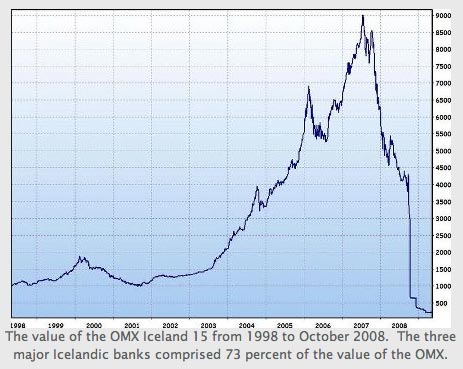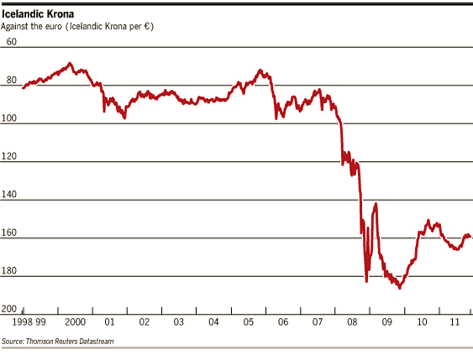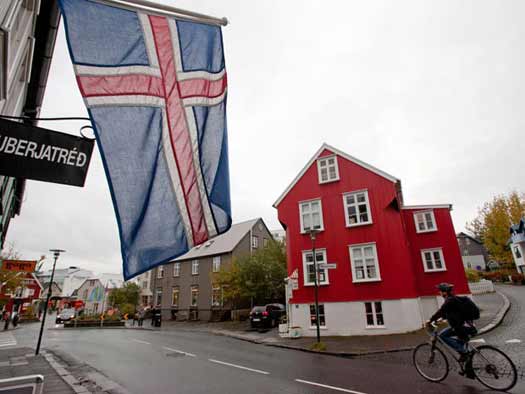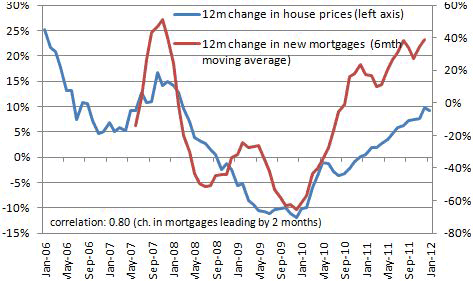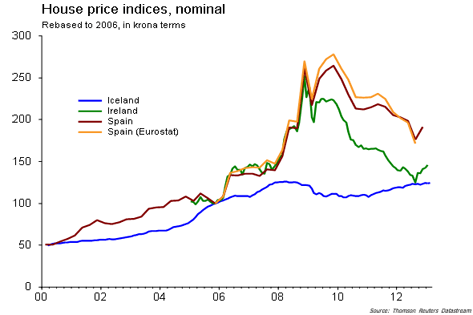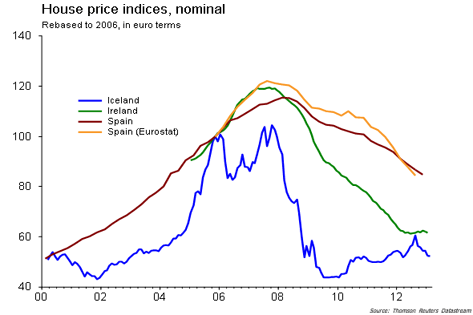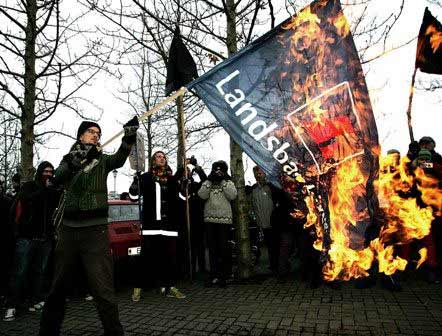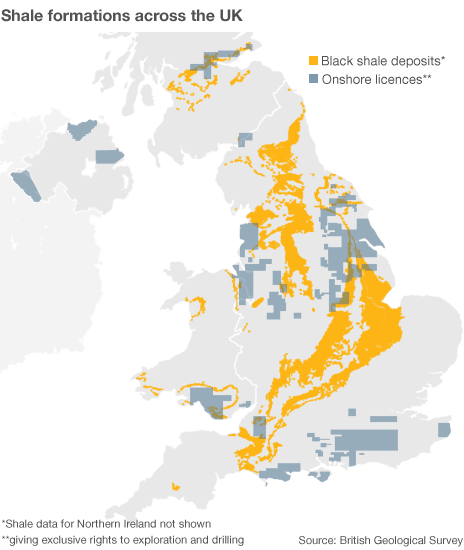
Arthur Siegel 2nd Avenue Rush Hour, Detroit 1942
There has been a lot of attention focused on shenanigans at the federal level in the USA this year, with games of brinkmanship and political theatre over the fiscal cliff, the debt ceiling and the government shutdown. Cheap political points were scored in a series of unedifying spectacles, but there was no serious risk of default, despite the dramatic rhetoric. It is not at the federal level that the rubber meets the road in the US, but at the state and municipal level, where many states and municipalities are poised to hit a financial brick wall at a hundred miles an hour, as Detroit spectacularly did on July 18th.
They can neither print money nor monetize debt, meaning that tax hikes and service cuts are on the cards, along with the wholesale breaking of financial promises in some jurisdictions. Both pensions and bonds are at risk, along with the services residents depend on. One group of stakeholders – residents – is currently shouldering all the losses while others remain whole, for the time being. The losses suffered by residents, in the form of tax hikes and service cuts rarely make headlines, allowing a form of slow motion financial train wreck to occur on Main Street without the attention that would come with formal default on ‘protected’ obligations like pensions and bonds.
There is a great deal of variety in the financial health of states and municipalities, so the crunch will be very unevenly distributed both spatially and temporally. The process has already begun in many places, however the long rally has distracted from the realization of local government in crisis that was dawning in 2010, and has postponed, but not prevented, the day of reckoning. The fundamentals have continued to deteriorate, but the perception of the situation has changed in the direction of far greater optimism, in line with the prevailing sentiment peak.
Back in 2010, CBS’s 60 Minutes dared to shine a light in dark places with the programme “State Budgets: Day of Reckoning” (Click to Play Video). This proved highly controversial, particularly the interview with Meredith Whitney, an analyst who had recently compiled an in-depth report on the state of municipal finances. Meredith herself was vilified for supposedly making a prediction on the programme that 50-100 municipalities would default on their bonds within 12 months, which sparked a panic. Investors subsequently withdrew $14 billion from muni bond funds in just over a month, dropping fourth quarter returns to the lowest level for 16 years.
What people think she predicted clearly did not happen. However, she was misquoted and misinterpreted. She said that the issue would become a concern within that timeframe, and indeed it already was a concern, as the data in her report demonstrated. Since then we may not have seen a rash of bond defaults, but we have seen as far more complex scenario of broken promises unfold, with over-burdened municipalities desperately trying to keep faith with bondholders and pensioners at the expense of residents, who face a downward spiral of tax rises and service cuts. The squeeze is well underway and is destined to worsen until it becomes impossible to keep any class of promises.
Commentators are frequently criticized if their predictions do not play out immediately, as if that renders their analysis completely wrong. Investors place short term bets on one dimension of what they thought they heard, and when those bets do not pay off, they are angry. Never mind the bigger, far more complex picture and the enormous implications for ordinary people’s lives. The ability to deliver short term, and short-sighted, gain appears to be what analysts are judged by, as if the longer term could look after itself or is somehow irrelevant. So-called investment becomes nothing more than a speculative game under these circumstances – a game that is being played with real people’s lives and livelihoods.
State and municipal finances are every bit as significant an issue as Meredith Whitney pointed out three years ago. In fact it is quite possible she may prove over time to have erred on the side of optimism, particularly in relation to the prospects for states currently benefitting from a temporary energy boom destined to be proven a misallocation of capital (see our body of coverage on unconventional oil and gas). Nevertheless, she has been subjected to substantial criticism and ridicule, much of it highly personal:

Wall Street analysts make bad calls all the time, but among the worst made at least in recent history has to be Meredith Whitney’s prediction back in 2010 that the municipal-bond market was set for an epic implosion …
… The result was investor panic with small investors dumping their holdings at a time they probably should have been buying muni bonds. The reason: munis are tax exempt. The smart money knew that in a time of rising taxes (particularly in states like New York and California) muni’s would be a pretty good investment. Whitney should have known that.
She should have also known that since she works on Wall Street (which underwrites the bonds of states and cities) that muni defaults occur all the time even if for the most part muni bonds are pretty safe. “Sizable” defaults (as opposed to some fiscally distressed municipality or a tax-exempt hospital bond) are almost non existent — which made her prediction so scary and when you think about it for a few moments so utterly absurd.
If you took Whitney at her word, the financial crisis that swept Wall Street was now about to sweep state and local government. This sounds plausible but like most of what Whitney predicts the kernel of truth obscures a larger absurdity. Yes cities and states face enormous pressures since the financial crisis because of lower employment levels, and thus lower tax collections. But one of the triggers of the financial crisis was that Wall Street firms that had limited access to capital to run their operation. But states and cities have access to their own form of capital; even basket cases like California have raised taxes to meet budget demands since the 2008 financial crisis. They can also cut their budgets, which they have doing as well. In other words, there was no immediate crisis that investors needed to react to as they did in ’08 when bank stocks crashed. Again Whitney should know all of this.

Whitney was not actually predicting an immediate, acute crisis, but a longer term, chronic structural predicament in relation to local government finances. Mr Gasparino, author of the above quote, completely failed to appreciate that.
Even this Lunch with the FT interview, from earlier this year, paints a very ambivalent picture (the full article being peppered as well with personal references to clothing and appearance, which detract from the real issues):

Whitney can afford to whisper: people go to great lengths to listen to what she has to say, even if they sometimes regret it afterwards. In 2007 she predicted that Citibank would cut its dividend – and it did. But then in 2010 she predicted that 50 to 100 municipal bonds would default – and they didn’t. Call #1 had Michael Lewis saying she was “the closest thing Wall Street has to an oracle”. Call #2 had Fox TV commentator Charlie Gasparino saying she “didn’t possess a single brain cell” …
… It is odd how cross people are with Whitney about that municipal bond call she made two and a half years ago. Her initial bearish view was shared by such financial luminaries as Bill Gross and Nouriel Roubini; she only departed from them by being specific and saying defaults would run into hundreds of billions dollars within a year. When the defaults didn’t happen, she made everyone even crosser by declining to say sorry.
“Hundreds of billions [of defaults] is still absolutely possible,” she goes on. “You hope it’s not – but Detroit is a matchstick away from going bankrupt.” Meanwhile, any apparent improvement in California’s finances is an illusion. She rehearses again her central argument with an intensity that is slightly scary: taxpayers are getting fed up with footing the bill while bondholders get paid in full. Something’s got to give.
I want to know if she feels bad about the people who followed her and lost money. She shakes her head and insists it wasn’t like that. It was year-end, and there were technical factors behind the fall in bond prices …
… “It was math, it wasn’t personal. Some people make all this stuff personal and it’s not.” And yet the way people have gone for her has been very personal indeed. They’ve made death threats. They call out mockingly in the street.

Whitney’s position is clearly deeply threatening to many, particularly because it is a construct of actual objective data and number crunching that is very difficult to argue with. As such the reaction is often unthinking dismissal and personal condemnation, rather than any rational attempt to provide a counter argument. Denial is strong in a financial world drunk on its own elixir of irrational exuberance and determined to believe that systemic risk could not possibly be real.
The implications are stark, as Detroit’s pensioners and bond-holders are beginning to discover following its trailblazing bankruptcy on July 18th. We commented on the bankruptcy at length back in the summer in Promises, Promises … Detroit, Pensions, Bondholders And Super-Priority Derivatives, pointing out the extent to which residents have been squeezed for years in order to keep promises to pensioners and bond holders.
Bankruptcy is a final admission that the process cannot continue, and that previously ‘protected’ promises cannot in fact be kept. It is time for the city to start again with a clean slate. Pensioners and bond-holders face 90% haircuts on what they believed to be secure commitments. At the moment they are attempting to defend supposed legal protections for the promises made to them in court, and seem to think those protections will be upheld. This is highly unlikely, as that which cannot be paid will not be paid, whatever legal niceties may be called upon.
This is the point where the on-going financial contraction at the local government level jumps from relative obscurity to grabbing the headlines. A plethora of small cuts does not register, but one or two very large cuts do. Once it sinks in that the ground rules have changed, and that protections can be very flimsy indeed, a contagion effect is highly likely. For the time being the buoyant mood of prevailing optimism leads people to gloss over negative news, perceiving it to be insignificant, or believing a situation to be unique rather than demonstrative of a widespread problem.
The real implications of bad news are only likely to sink in once the mood shifts towards fear. Once fear is in control, the perception of circumstances can change very rapidly, and people act on perception. At this point I would expect to see the media begin to grasp the new reality quite abruptly. That will be when the issue of state and municipal finance gets very much more visibility and traction.
Whitney has predicted ‘staggering aftershocks’ from the bankruptcy of Detroit – a position with which we at TAE would strongly agree. These have yet to materialize, but it is still early days. Still, others are beginning to agree that there is a structural problem:

“When U.S. banking analyst Meredith Whitney warned of problems in the $3-trillion U.S. municipal bond market as far back as 2010 she was widely decried by most of Wall Street for being alarmist and had been widely ridiculed for most of the last few years; however nearly three years later her concerns look like being very prophetic,” said senior analyst Michael Hewson of CMC Markets in London …
… Ms. Whitney is not alone in now citing the pension and debt troubles of other cities in the wake of the biggest municipal bankruptcy in U.S. history. Earlier this week, for example, chief economist David Rosenberg of Gluskin Sheff + Associates warned that Detroit is just the “open act,” though he noted that many of the city’s issues are unique. Still, that didn’t stop him from citing Chicago as the “next culprit,” though he wouldn’t make a call on a similar bankruptcy filing, noting only the similarities in the troubles plaguing both cities.
Ms. Whitney, in turn, notes that city bankruptcies have been rare, but things are different now as municipalities struggle to survive. “As jarring as the reality may be to accept, Detroit’s decision last week to declare bankruptcy should not be regarded as a one-off in the U.S. municipal market – which is what the bond-peddlers are now telling their clients,” she writes. “The aftershocks of the largest municipal bankruptcy in U.S. history will be staggering, and Detroit will set important precedents.”

Those will be precedents regarding how losses will be shared out under conditions where very few previous promises can be kept. There are many competing constituencies, with different levels of formal protection in a tangled web of commitments. It will be necessary to prioritize competing claims, striking down many protections in the meantime, as those selective protections would unfairly promote the interests of one class of claim over other equally deserving ones. This will be highly divisive. As difficult as it is to share out gains fairly, it is far harder to share out losses in any way perceived to be equitable. As Meredith Whitney has pointed out, everyone loses:

“The fact is everybody loses and everybody is going to have to make a concession,” said Whitney, who earlier this year published her book “Fate of the States.” “In Detroit’s case, it was in near-third world operating conditions in the richest country in the world,” she said. “Finally, the city said enough’s enough.”
Detroit’s problems aren’t isolated either. Whitney said local governments across the country will continue to struggle with heavy debt loads, a problem that will trickle down to average Americans. “I think you’re going to see a real issue of neighbor against neighbor on these very issues,” she said. “That has been glossed over for years. What’s at stake are social services we count on.”…
…“There are five more towns like Detroit in Michigan alone,” Whitney wrote in the FT. “There are many more municipalities across the country in similar positions. Detroit’s decision last week paves the way for other elected or non-elected officials to make decisions to save their cities and towns, decisions that probably involve politically unpopular actions that may secure their long-term viability.”

Because the impact of this precedent-setting case has yet to be felt, the knee-jerk critics have felt justified in excoriating Whitney again, in commentary ridden with hyperbole, sarcasm and schadenfreude. See this for example:

Famous fear-generator Meredith Whitney is once again generating fear about a coming fiery apocalypse for state and local governments. Fortunately, she is just as wrong about this as she always is.

Or this:

Less than four years after breaking out on her own, Meredith Whitney is shuttering her advisory shop. It’s a stunning defeat for one of Wall Street’s most recognizable faces. But as I’ve suggested before, that’s what bad advice will get you. Whitney, who achieved fame for an over-hyped banking forecast in 2007, was taken down after she predicted at the end of 2010 as many as 50 to 100 municipal defaults. Even by the most forgiving standards, we’re about 45 to 100 defaults away.
Whitney, with her made-for-CNBC looks and cocky and combative demeanor, overplayed her hand. Now, it appears her clients, if she had any at all, have moved on … ..Whitney’s 50- to 100-defaults prediction on “60 Minutes” at the end of 2010 may be the biggest blunder that market has ever seen. Panicked investors bailed out on the call, but municipal bond’s inherent safeguards quickly became apparent. The bonds rallied, leaving many investors who followed Whitney behind.
And then, of course, there was Detroit’s bankruptcy. Whitney called it a “game changing” event. She seemed almost giddy, stirring up the fear that others may follow in an op-ed piece called “Detroit Will Start A Wave Of Municipal Bankruptcies.” As Michael Aneiro at Barron’s put it July 23, Whitney couldn’t resist. That’s why she’s the “biggest alarmist in the history of public finance.” All of this raises the question: What will come first: 50 to 100 muni defaults or Whitney admitting she was just plain wrong?

Or this:

You knew it was coming. The biggest municipal bankruptcy in history was too big an opportunity to pass up for the biggest alarmist in the history of public finance. And this afternoon it happened: Meredith Whitney emerged to pen an opinion piece in the Financial Times under the headline (brace yourself) “Detroit Will Start A Wave Of Municipal Bankruptcies.”
Whitney, you recall, is the one-time one-hit bank analyst who astutely predicted Citi‘s demise in the lead-up to the financial crisis. After fading out of the limelight for a couple of years, she turned her attention to public finance, infamously warning of “hundreds of billions of dollars” of municipal defaults within 12 months during an appearance on “60 Minutes” in late 2010, a prediction that didn’t even come remotely close to being accurate, but sparked a months-long muni-market rout as spooked investors pulled money from muni funds. In her attempt to recast herself as a muni-market Cassandra rather than just a muni-market pariah, Whitney once again finds herself in the familiar position of saying just about the exact opposite of what most longtime muni-market experts are saying …
… For anyone with a decades-long investing time horizon, who prefers to go years at a time without making any portfolio adjustments, read Whitney’s piece and by all means consider pulling some money from muni funds. For the rest of us not easily alarmed by extremely slow-moving objects far off in the distance, stick to the advice of other experts, who almost unanimously call Detroit’s situation unique, and possibly precedent-setting for how the city and the court treat general obligation bonds compared to other creditors, but by no means the start of a cascading muni-market disaster.

Anyone even vaguely familiar with the financial history of the last few years will be able to think of far larger financial blunders, not to mention major incidents of malfeasance and fraud which have cost far more people far more money than anything Meredith Whitney ever said. As for being the ‘biggest alarmist in the history of public finance’, she is optimistic in comparison with our position.
There is a great deal in the world of finance, both public and private, to be alarmed about at the current juncture. Comments like those above are typical of the extreme complacency and disregard for risk that characterize a market top. It would be difficult to find a greater example of complacency than describing the municipal finance issue as an “extremely slow-moving object far off in the distance”. That is simply a way of saying that the obvious long term risks can be ignored, indeed it indicates contempt for the very notion of paying attention to the longer term in a rational and objective manner. Risks appear benign at the peak of a bubble, when sentiment is at an optimistic extreme, but we would do well to remember what follows. Risk has a way of staging a dramatic resurgence in a short stretch of time.
Many of those risks are clear already to anyone minded to look. Both states and municipalities (not all to be sure, but a significant number) are facing hard limits, and those limits will get tighter as the pie shrinks. Competition for a slice of the remaining pie will get fiercer. States and municipalities are very likely to find themselves in increasingly complex competition with each other. This has already been going on, as higher levels of government have been downloading responsibilities without the funding to go with them, hence states have been improving their own finances at the expense of municipalities, which in turn have no choice but to further squeeze residents for the cost or to fail to deliver on the responsibilities:

All you have to do is look to Detroit—or any of the nearby auto towns named after a Buick model of one sort or another—and you see fiscal crisis playing out right now. Look in your own backyard—or at the potholes on your neighborhood roads—and you will likely find the same.
Consider the email I received on March 7 from former New York State Assemblyman Richard Brodsky about Yonkers Mayor Mike Spano’s recently formed Commission of Inquiry into what he refers to as that city’s “Great Unraveling.” (Brodksy is serving on the commission.) “[Yonkers has] a budget of about $1 billion and a budget gap in the upcoming year that looks like it can’t be bridged. There are reasons aplenty. Like many urban centers the Yonkers manufacturing base disappeared, the middle-class moved out and the people simply can’t afford the property and sales tax burden that ensured. Anti-tax fervor hit and elected officials refused to raise recurring revenues. Gimmicks, one-shots, borrowing for operating expenses, assets sales, and assorted maneuvers ‘kicked the can down the road’ for a couple of years…The city has now run out of gimmicks.”
And then he sounds very Whitney-like: “It’s as though we stand on the shore and watch a tsunami gather and shrug and hope we’ll get through it…That needs to change, and if the list of endangered cities gets larger this will force itself onto the national stage. [For now] the great national battle about the size of government and the level of taxation will be played out in the streets of small cities across America, with school kids, garbage pick-up, fire-protection, and safe streets competing with each other for inadequate resources. It’s an ugly way to solve a problem.”

This is why the rubber meets the road at the local level, and why we should be paying far more attention to what is going on beneath the surface in America, far from Wall Street and the distracting political theatre at the federal level. Warning signs exist in many places and it would be instructive to look at a few of them. Many have similar structural problems to Detroit:

While few municipalities are as economically depressed or dilapidated as Detroit, many have borrowed heavily, raised taxes and hollowed out services to pay retirement and debt obligations. Some like Detroit may soon decide that clipping bondholders and pensioners is a better option than to keep whacking taxpayers.
Take Oakland, which is Detroit’s doppelganger on the West Coast. The run-down Bay Area city, which has the highest crime rate in California, recently laid off more than 100 police to fund retirement benefits and pension-obligation bonds. Murders and robberies shot up by nearly 25% last year. To avert steeper cuts, the city borrowed an additional $210 million to finance pensions.
Philadelphia and Chicago have been less scrupulous about financing pensions and are now having to make balloon payments to prevent their retirement funds from going broke. Philadelphia is spending about 20% of its budget on pensions to make up for years of short-changing the system. In 1999, it issued $1.3 billion in bonds to invest in the pension fund, but it has paid more in interest than it has earned on its pension investments. The city has recently raised sales, property and business taxes. The city council is now discussing using revenues from a one-percentage-point sales tax hike in 2009 intended for schools to finance pensions. Its sale tax rate is now 8%, the limit under state law.
Chicago is also fast approaching a day of reckoning. Chicago Public Schools last week announced 2,100 layoffs, which Mayor Rahm Emanuel blamed on a $400 million spike in pension payments. “The pension crisis is no longer around the corner,” he said. “It has arrived at our schools.” Moody’s downgraded the city’s general-obligation bonds last week due in large part to rising retirement and debt service costs, which comprise about a third of its operating budget. Chicago plans to dump 30,000 retirees on Medicare and the ObamaCare exchanges in 2017. Yet all savings will go toward pension payments, which will triple in 2015. The mayor has warned that the bill could force a 150% spike in property taxes.
Smaller cities may present an even greater default risk because they have lower borrowing limits, and retirement costs tend to consume a larger share of their operating budgets.

Even declaring bankruptcy, as San Bernardino did, does not necessarily give a city a fresh start unless the thorny issue of legal protections for some classes of promises – notably pensions – is addressed. If the class of promise in question is also the major financial problem facing a city, as it often is, nothing is really solved by bankruptcy. It merely amounts to another in a long series of stop-gap attempts to kick the can down the road:

When this sun-drenched exurb east of Los Angeles filed for bankruptcy protection in August, the city attorney suggested fraudulent accounting was the root of the problem. The mayor blamed a dysfunctional city council and greedy police and fire unions. The unions blamed the mayor …
… Yet on close examination, the city’s decades-long journey from prosperous, middle-class community to bankrupt, crime-ridden, foreclosure-blighted basket case is straightforward — and alarmingly similar to the path travelled by many municipalities around America’s largest state. San Bernardino succumbed to a vicious circle of self-interests among city workers, local politicians and state pension overseers. Little by little, over many years, the salaries and retirement benefits of San Bernardino’s city workers — and especially its police and firemen — grew richer and richer, even as the city lost its major employers and gradually got poorer and poorer.
Unions poured money into city council elections, and the city council poured money into union pay and pensions. The California Public Employees’ Retirement System (Calpers), which manages pension plans for San Bernardino and many other cities, encouraged ever-sweeter benefits. Investment bankers sold clever bond deals to pay for them. Meanwhile, state law made it impossible to raise local property taxes and difficult to boost any other kind. No single deal or decision involving benefits and wages over the years killed the city. But cumulatively, they built a pension-fueled financial time-bomb that finally exploded.
In bankrupt San Bernardino, a third of the city’s 210,000 people live below the poverty line, making it the poorest city of its size in California. But a police lieutenant can retire in his 50s and take home $230,000 in one-time payouts on his last day, before settling in with a guaranteed $128,000-a-year pension. Forty-six retired city employees receive over $100,000 a year in pensions. Almost 75% of the city’s general fund is now spent solely on the police and fire departments, according to a Reuters analysis of city bankruptcy documents – most of that on wages and pension costs.
San Bernardino’s biggest creditor, by far, is Calpers, the public-employee pension fund. The city says it owes Calpers US$143-million; using a different calculation, Calpers says the city would have to pay US$320-million if it left the plan immediately. Second on the city’s list of creditors are holders of US$46-million worth of pension bonds — money borrowed in 2005 to pay off Calpers. The total pension-related debts are more than double the $92 million owed to the city’s next 18 largest creditors combined …
… Yet even in bankruptcy, reducing pension costs by cutting benefits is not an option – at least according to Calpers. The pension agency says the benefits are carved in stone, arguing that from the day a worker is hired, the pension plan in place on that day for that person can never be reduced in value under any circumstances, including municipal bankruptcy. That argument has never been tested in court: When the Bay Area city of Vallejo went bankrupt in 2008, it declined to challenge the pension payments to Calpers, in part because of the daunting legal costs involved. But the pension-bond insurers who are now on the hook for defaulted bonds in both Stockton and San Bernardino have signaled their intention to do battle with Calpers in bankruptcy court. San Bernardino, in an unprecedented move, has already stopped making payments to Calpers …
… San Bernardino and Stockton are hardly alone. A handful of other small California cities, including Atwater, Hercules and Compton, are teetering near bankruptcy. Big California cities that run their own pension plans also have deep problems. San Jose, hub of Silicon Valley, and San Diego, biotech center of California, both passed pension reforms in June in the face of unmanageable retirement benefits. They are now defending those measures in court against public-employee lawsuits …
… The chronic mismanagement in San Bernardino, though, is a common feature of local government in California and around the United States. Much power over municipal finance lies in the hands of those with the most at stake — city employees, elected officials and others who depend directly on government for their livelihood.

Recently, however, San Bernardino has decided to tackle the elephant in the room, while other municipalities have preserved pension contribution at the cost of bond haircuts:

In what could presage a groundbreaking showdown with America’s largest public pension fund, San Bernardino officials will challenge Calpers’ calculations and also seek a longer repayment term on the debt. Calpers says that after San Bernardino halted its employer contribution to the fund for an entire year after filing for bankruptcy protection in August last year – the first time a California city has ever paid less than its full dues – its arrears stand at just under $16.5 million, plus growing interest … It will be the first time the city has had substantive negotiations with its creditors since it declared bankruptcy on August 1, 2012.
The San Bernardino case is taking a much different course than that of Stockton, another California city that filed for bankruptcy last year. Stockton has kept current on all payments to Calpers and decided not to take on the pension fund in its bankruptcy, while bondholders have agreed to accept substantially reduced repayments. Calpers has supported Stockton’s bankruptcy, but has fought San Bernardino’s quest for Chapter 9 protection at every turn. In San Bernardino, the stakes are high for the pension fund because it has strenuously argued that all cities and other local entities must always pay it in full, and on time, even in a bankruptcy …
… San Bernardino resumed paying Calpers in July, but has reneged on its debt to bondholders and other creditors since August 2012, including the holders of $50 million in pension obligation bonds …
… Many California cities are struggling to meet growing pension costs, which are typically by far their biggest expense.

The related issue of retiree healthcare is also a highly emotive issue tightly bound up with the municipal financial crisis:

The man in charge of the biggest U.S. city ever to file for bankruptcy is clear about the root of the crisis. It was a decision that gave firefighters full healthcare in retirement starting on January 1, 1996, said Bob Deis, the city manager of Stockton, California. At the time, the move seemed cheaper than giving pay raises sought by unions, officials involved in the decision said. When other Stockton employees demanded the same healthcare deal in following years, the city agreed. Deis, who signed Stockton’s bankruptcy filing last Thursday, slammed the decision to provide free healthcare to retirees as a “Ponzi scheme” that eventually left the city with a whopping US$417 million liability …
… To counter demands for wage hikes from city workers in the 1990s, Stockton offered to extend their health insurance in retirement past age 65 – a benefit they embraced and assumed to be rock solid until the insolvent city’s officials put it on the chopping block in a bankruptcy plan last week. “It was a balancing act,” said Dwane Milnes, Stockton’s city manager at the time. “The unions wanted retiree medical … We said if you want to continue your medical for current employees and retirees, you’ll have to do it through wage containment.” Milnes, who represented Stockton’s retirees in recent talks with City Hall, said the strategy was sound at the time.
“We were satisfied that based on a conservative view of the economy and based on the medical inflation rate we were experiencing in the 1990s, the city could adequately fund retiree medical.” Detective Mark McLaughlin said Stockton’s labor unions embraced the trade-off, which in the police department’s case helped with recruiting and retention. “It was an easy sell,” he said, adding that city workers believed the money they gave up in pay increases would be able to pay for the health benefit …
… Axing retiree medical benefits is now central to efforts to restructure Stockton’s finances, Deis said. Many retirees are in a state of shock about that. “I believed the city would honor its commitments,” said Geri Ridge, 56. The former clerk retired last year after 26 years with Stockton’s police following a second heart attack. Ridge lives off a monthly pension of US$1,895. She learned on Friday that she now faces a US$576 monthly premium for her health coverage – or US$1,277 a month if she keeps her daughter on her plan. She has no idea of how to pay for the coverage, which the city will fully eliminate in a year.

Many cities across the US are going to have to tackle these issues head on as it ceases to be possible to kick the can down the road. Residents cannot bear the burden of all the cuts forever. The pensions crisis is very real, and the underfunding is compounded by completely unrealistic rate of return assumptions, typically 8% per year, when 2% would be more defensible. If pension projections were based on anything remotely realistic, the underfunding would be far more obvious.
As it is, the gap is partially concealed by accounting assumptions, allowing people to hold on to their belief in the promises made to them. They not only hold on to that belief, but defend against any attempt to address the funding gap. They cling to the pie-in-the-sky notion that they will receive the full amount, while preventing any kind of reform that might actually deliver a partial payment, thereby raising the risk of receiving nothing:

Voters in Cincinnati last week soundly defeated a ballot initiative which would have overhauled the pension system for public workers, leaving the city without a plan to deal with $872 million in unfunded liabilities. Cincinnati is not alone. Across the nation, cities and states are finding funding for basic services being crowded out of their budgets by the rising cost of retirees’ pensions and healthcare. The Cincinnati initiative would have turned the public pension system into a 401(k) style-plan and require the city to pay off its unfunded liabilities in 10 years …
…A study by the Pew Center earlier this year looked at 61 cities — those with populations over 500,000 plus the largest city in each state — and found a total gap of $217 billion between pension and retiree healthcare obligations and the funding saved to pay those costs. According to Pew, those cities had a total pension liability of $385 billion, with 74 percent funded, leaving a $99 billion shortfall. The situation regarding retiree healthcare benefits in those cities is far worse, with a total of $126.2 billion of liabilities that are only 6 percent funded.
But here’s the real rub: experts are warning that many pension systems, those claiming they are well funded and those who say they aren’t, have all been using rosy projections about future investment returns …
Many localities are seeing their operating budgets squeezed to pay for pension and healthcare retirement benefits. The country’s 250 largest cities saw spending for pensions increase to 10 percent of their general budgets in 2012, an increase of 7.75 percent since 2007, according to The Wall Street Journal.

The pension issue can no longer be ignored. Sooner or later (and probably sooner), unreformed plans will collapse and suffer Detroit-style losses:

No sooner had the Chicago teachers’ strike been settled than a new crisis emerged last week in the Windy City. The Chicago Teachers’ Pension Fund was reported to be on the brink of collapse. That fund is not alone. Although the troubles that plague the Social Security system get the most attention, similar dangers now threaten many other kinds of retirement funds. Some plans are being inadequately funded, some have earned unexpectedly low returns, and some suffer from a Baby Boom bulge in the number of retirees. Moreover, the problems facing these funds will in many cases be harder to fix than those for Social Security. And the scale of the total potential shortfall is immense.

Chicago is one of the worst examples of municipal finance, and is probably one of the leading contenders to follow Detroit’s lead. The level of debt there is staggering:

Cook County encompasses Chicago and some of its surrounding suburbs. This week, the Cook County Treasurer discovered “stunning” debt. This debt isn’t new, but apparently our officials are now properly terrified. Our total debt for the municipality, education, county, sanitary, park, fire, township, library and special services is now $108 billion. That means the debt per person in Chicago exceeds $23,700 (corrected assuming 2.67 average per household) or more than $63,500 per household, and that is just local debt.
The other problem is that the Illinois economy isn’t growing. Many of those households have no income coming in other than government subsidies, and some have no income at all. Unofficial unemployment numbers top 20%. State of Illinois taxes increased from 3% to 5%, an increase of around 67%. Taxes on real estate, utilities, sales, and more are expected to skyrocket. Businesses like the Chicago Mercantile Exchange are being courted by low income tax states (at least the income taxes are currently low) like Florida.

The budget choices being made have consequences for real people in their daily lives. While there has not yet been a formal default, the relentless cuts elsewhere are well underway:

Thousands of Chicago children will be walking a different route to school as they begin the new academic year on Monday morning after the city closed about 50 elementary schools to help plug a projected $1bn education budget gap. Last month the district laid off more than 2,000 teachers and staff on top of the roughly 1,000 culled as part of the school closings. Chicago’s measures are some of the more drastic being taken by a school district. But the city is not alone and, as the US braces for another round of budget battles in Washington …
… This month Philadelphia was forced to borrow $50m just to be able to start school on time. That came after the district closed 24 schools in June and cut nearly 4,000 employees. Last week Detroit’s school system issued $92m in one-year debt to cover operating expenses for the new school year. It has lost more than 33,000 students, or 40 per cent of those enrolling, since 2010 as Detroit’s population has shrunk and charter schools have grown.
Chicago’s budget problems are driven in part by the teachers’ pension fund, which faces a $404m increase in its required pension contribution during this school year. The city’s schools that are remaining open are cutting services and facing hard decisions, according to Clarice Berry, head of the Chicago Principals & Administrators Association. “You have to decide ‘Do we go all year without textbooks so I can have an extra staff person?’”
Most of Chicago’s cuts have taken place in the predominantly poor, African-American and Latino south and west sides, which is also where the majority of the city’s 506 murders occurred last year. The city has created 600 “safe passage” routes manned by adults and meant to try to ensure the safety of students crossing gang territories. But in recent weeks at least two people have been killed on those paths. One incident saw four injured and one dead after a shooting in front of a church. Another saw a 54-year-old man shot on the safe passage route that leads to Drake Elementary in Bronzeville.

The situation in Detroit is not looking so unique these days. Debts and long term obligations have been piling up for years, and debt/obligation servicing has been increasingly consuming the substance of the municipalities required to honour these commitments. Additional debts are taken on in the bond market in order to make good, in the short term, on older obligations. Many are approaching a hard limit to their ability to repay and are very likely to follow Detroit’s lead:

Detroit, once the emblem of the growing U.S. economy, had no other options than to file for bankruptcy. Other cities in California, and cities like Jefferson County, Alabama, have done the same for very similar reasons: registering a budget deficit year-after-year as revenues declined and costs rose—especially pension costs … Cities across the U.S. economy are experiencing rising budget deficits, and contrary to popular belief, it’s not just smaller cities; major cities are in the same situation. In fact, two major American cities are in big fiscal trouble.
Chicago, the “Windy City,” is expected to incur a budget deficit of $338.7 million next year. By 2015, this budget deficit will increase to $1.0 billion, moving up to $1.15 billion by 2016. The city is in deep trouble as pension liabilities are soaring—police and fire pensions are in a cash crunch. (Source: Chicago Sun Times, August 1, 2013.) The city has received credit rating cuts and warnings from credit rating agencies. It owes billions of dollars to its suppliers and it can’t pay them.
Baltimore is in a similar situation. In February of this year, the city’s long-term budget deficit was projected to be $750 million. In a desperate attempt to fix the issue at hand—to reduce the budget deficit—the city cut about 2,200 dependants from the health insurance plan it provides to its employees. (Source: Baltimore Sun, August 2, 2013.)
In the first six months of this year (January to June), more than $176 billion worth of municipal bonds were issued. (Source: Securities Industry and Financial Markets Association web site, last accessed August 5, 2013.) It is foolish to think investors won’t see some problems with some of these bonds.

It is increasingly difficult to see how Meredith Whitney’s projection for a wave of municipal bankruptcies could fail to materialize over the next few years. There are simply too many obligations to service and not nearly enough resources to go around. For decades promises were made in the present that would have to be paid for by future taxpayers. Now the future is here and exceptionally hard choices will have to be made. Already basic social services have been highly eroded in many places and infrastructure has been left to decay for want of fund for maintenance. That has led to a downward spiral that has depressed home prices and driven away viable businesses, therefore impacting on tax revenues. That in turn has compounded the original deficits in a vicious circle of decline. The weak get weaker, and as they become more obviously risky, their borrowing costs are rising, further increasing the pressure upon them.
So far, however, the effect has been muted, since investors desperate for yield are blindly chasing risk for want of other viable alternatives. Where there are few to no good options, they settle for what they perceive to be least worst options, however incorrect that perception may prove to be:

Today and Monday, individual investors have a unique opportunity to “benefit” from the greatest bond bubble in history, even before institutional investors get to jump in, and buy sewer bonds – yup, that’s where they belong – issued by a county that landed in bankruptcy court because it defaulted on its prior sewer bonds. The money will go to the existing bondholders who’ll get a fashionable haircut as part of the deal – a deal made in bond-bubble heaven.
Jefferson County, which includes Alabama’s largest city, Birmingham, filed for Chapter 9 bankruptcy protection in 2011 when it defaulted on $3.1 billion in sewer bonds. At the time, it was the largest municipal bankruptcy. That record was crushed when Detroit filed in July. In the olden days before the Fed repressed interest rates to near zero, back when it was a little harder for banks to fleece depositors on a daily basis, and when risk still had a price – a steep price – and when yield investors were less desperate, this deal would have been DOA. No conservative investor – and that’s what muni buyers are – would have lent to a municipality that had just ripped off its existing bondholders. There would have been a penalty for its reckless financial behavior. And it would have been exacted by the market: no more new debt, not for a long time, or only at a prohibitive cost, with yields deeply into the double digits.
But now yield investors are desperate, driven to the edge of sanity by the Fed, their patience wrung out of them by years of QE, and in their search for yield, they’re turning over stones, and whatever squiggly toxic malodorous thing they see there, it entices them, and they hold their nose and take the risk, any kind of risk, and pick it up, hoping for a little bit of income above the rate of inflation, and they’re so desperate that they even buy this Jefferson County sewer debt …
…There used to be a fear that once a municipality had stiffed bondholders in bankruptcy court, it would have trouble accessing the credit market again for a while, that it would be frozen out by investors who recognized the risk of reckless behavior and wanted to be compensated for it. But now, instead of forcing the municipality to get its financial house in order, bankruptcy offers an efficient method to live beyond your means and do dubious deals, then slough off that debt and get more money from new bondholders without even a pause. And start all over again.
Other cities are already trying it. Vallejo, a Bay Area city of 115,000, emerged from bankruptcy two years ago and is still struggling with soaring pension costs that had been left untouched. Yet, about a month ago, it was able to sell some bonds that will keep it afloat a while longer. And Stockton, another California city that went bankrupt, was able to borrow $55 million in new money to pay off some old water debt. These pale in comparison to Jefferson County’s $1.8 billion in bonds, sold while still in bankruptcy …
… But what will it do to the many deeply troubled municipalities? The lack of penalty and the availability of new money will encourage them to file for bankruptcy to wipe off in one fell swoop the sins of the past – only to commit more sins with new money, even more freely! More and more muni investors will be sacrificed on the altar of the Fed’s policies. And the Jefferson County bond deal might just be what it takes to open the floodgates.

Of course there are always financial players enthusiastic about profiting from the distress of others, while assuming they are immune from the consequences of that distress. For instance, municipal bond insurers expect more investors to require bond insurance, which they expect to profit from selling. At the same time they believe the losses they will incur from actual bankruptcies will be low – yet another case of short term profit seekers failing to appreciate long term structural risks:

Bond insurers exposed to billions of dollars of Detroit debt expect to emerge as long-term winners from the largest municipal bankruptcy in US history. Executives at MBIA and Assured Guaranty have relaunched their municipal bond insurance businesses, arguing that losses in Detroit will be small and that the risks highlighted by the city’s fall from grace could drive more bond investors to demand payment protection. Insurers cover losses if a local government borrower defaults, something that had appeared a safe and sleepy business until Detroit …
… On a conference call with analysts last week, Jay Brown, chief executive of MBIA, said that he saw a “silver lining” in the reaction to Detroit’s bankruptcy. “Muni bond defaults have historically resulted in a greater appreciation of the value of bond insurance,” he said. “So we will continue to remind the market that there will be no losses of principal and interest payments to?.?.?.?insured bondholders.”
Before the financial crisis, more than half of the $3.7tn of US municipal bonds bought were wrapped with insurance from Assured, FGIC, MBIA and Berkshire Hathaway Berkshire among others, a business model based on a kind of arbitrage. By providing insurance, a bond that was rated at a less than optimal level became a much more highly rated piece of debt, enabling a city to borrow more cheaply. The city was happy to pay the insurer with the money saved while the insurer pocketed the fee, confident that the city would always raise taxes rather than default. However, the insurance companies lost their gold-plated credit ratings after making a disastrous move into insuring mortgage-related derivatives. Now the proportion of municipal bonds wrapped with insurance has fallen below 5 per cent …
… Detroit’s woes are “an advertisement for the bond insurance space”, he said. “Any losses that the insurers face in Detroit might turn out to be a small price to pay for a revival of their industry.”

Bond insurance was one of the mechanisms that facilitated excessive borrowing by municipalities, by allowing them to achieve a credit rating they would not have merited on their own statistics. The assumption seemed to have been that the bond insurers faced no risk of not being able to make good on their own promise to back the municipal borrowers, or any other class of borrower. This assumption was clearly not borne out, as the losses taken by the insurers on their foray into mortgage back securities demonstrated.
Since there is no capital adequacy regulation for derivatives, there cannot be said to have been a solid guarantee of municipal debt either, yet the ratings agencies acted as if this was the case. They may do so again if the municipal bond insurance game reignites, even though this would allow over-burden borrowers to get themselves into deeper trouble. At some point that risk is going to be realized. After all, insurance is just another class of protection that may or may not be worth the paper it is written on when push comes to shove, and as we have seen in the case of Detroit, supposed protections can be ephemeral.
At least in the case of municipal bankruptcy there is an established legal mechanism to follow – Chapter 9 Municipal Bankruptcy. However, it is not just municipalities that are teetering on the brink, it is also states, and there is no legal mechanism for state bankruptcy. A look at the state of Illinois suggests one is going to have to be developed in the not too distant future:

It’s not quite fair to say that Illinois officials are doing nothing to defuse the most threatening pension time bomb in America. Darn close to nothing, that’s fair, which explains why the ratings agencies Fitch and Moody’s have put the state on their negative watch lists. The Land of Lincoln is heading toward yet another downgrade of its battered bond ratings if this near-paralysis keeps up … .Illinois Gov. Pat Quinn took to the ether last year to explain why underfunding the state pension system (the deficit is deepening by more than half a million bucks per hour) is not a good idea. When the state has to pay promised pensions even though the coffers are empty, said the governor, other priorities get squeezed—like schools, roads, and law enforcement …
… Awareness of the pension mess is not really the problem in Illinois. Everyone has known for years that the state is a fiscal wreck, with Exhibit A being the smoking crater in the pension fund. Thanks in large part to the rapidly growing slice of state spending that goes to pensions, Illinois has gone ten years without a genuinely balanced budget, and the state was essentially broke even before the Great Recession hit. Now it is roughly 300 days behind in its payments to vendors—despite having tried every accounting trick in the book to hide the red ink. In fact, awareness of the problem inspired the state legislature to raise taxes and deposit some actual money in the pension fund last year, rather than toss in the usual IOUs …
… The problem is … well, there are several problems, the first of which is leadership. Illinois did not have much during the period when former Gov. Rod Blagojevich followed his predecessor, former Gov. George Ryan, out of office and into federal prison on corruption charges. As the Chicago Tribune has amply documented, Illinois labor leaders, lobbyists, legislators, aldermen—even longtime Chicago Mayor Richard M. Daley—have been more likely to pad pensions than to properly manage them, starting with their own comfy retirement cushions.
Lawmakers promised more and more benefits to retired teachers, police officers, firefighters, and other government workers over the past decade; meanwhile, the pool of money to pay these pledges was neglected. The estimated shortfall of nearly $100 billion between now and 2045 is, believe it or not, a rosy scenario, given that a) it assumes robust investment returns and b) doesn’t include local pension disasters, like the estimated $20 billion hole in the City of Chicago system …
… The Pew Center on the States, which tracks the pension funding problem nationwide, says Illinois now faces the worst mess in the country, with less than half of its pension obligations currently covered. But other states are suffering from symptoms of the same disease. According to Pew, 34 states were short in 2010 of the recommended 80-percent funding level considered safe for pension systems. (That is the most recent year for which data is available; defenders of public pensions argue that 2010 figures exaggerate the problem because they collected near the bottom of the bad economy.) In all, Pew estimates the total shortfall in state pensions to be $1.38 trillion.
Fixing problems of this scale, where the political price is immediate while the benefits are stretched out over decades, is never easy. The widely acclaimed reforms passed in Rhode Island last year are bogged down in litigation, as unions fight to preserve the deals they negotiated. But each day that passes without major reforms, the mathematics of the Illinois crisis grind on: ever more retirees, collecting steadily larger checks, as tumbling bond ratings make it more and more expensive to borrow money to mask the hole.

As with municipalities, a state verging on insolvency also has to make hard choices that have a tremendous impact on the lives and livelihoods of ordinary people:

Even by the standards of this deficit-ridden state, Illinois’s comptroller, Daniel W. Hynes, faces an ugly balance sheet. Precisely how ugly becomes clear when he beckons you into his office to examine his daily briefing memo. He picks the papers off his desk and points to a figure in red: $5.01 billion. “This is what the state owes right now to schools, rehabilitation centers, child care, the state university — and it’s getting worse every single day,” he says in his downtown office. Mr. Hynes shakes his head. “This is not some esoteric budget issue; we are not paying bills for absolutely essential services,” he says. “That is obscene.”…
… In Illinois, the fiscal pain is radiating downward. From suburban Elgin to Chicago to Rockford to Peoria, school districts have fired thousands of teachers, curtailed kindergarten and electives, drained pools and cut after-school clubs. Drug, family and mental health counseling centers have slashed their work forces and borrowed money to stave off insolvency. In Beardstown, a small city deep in the western marshes, Ann Johnson plans to shut her century-old pharmacy. Because of late state payments, she could not afford to keep a 10-day supply of drugs. In Chicago, a funeral home owner wonders whether he can afford to bury the impoverished, as the state has fallen six months behind on its charity payments, $1,103 a funeral. In Peoria — where the city faced a $14.5 million gap this year and could face an additional $10 million budget hole next year — Virginia Holwell, a trainer of child welfare caseworkers, lost her job when the state cut payments to her agency. She sits in her living room high above the Illinois River and calculates the months of savings left before the bank forecloses on her house … The city of Rockford plans to close fire stations and lay off firefighters, and in Decatur, 180 impoverished seniors have lost their delivered meals. The lakeshore condo towers in Chicago bespeak affluence, but there are so many foreclosures on the bungalow blocks of southern and western Chicago that “for sale” signs sprout like sunflowers … … “We are a fiscal poster child for what not to do,” said Ralph Martire of the Center for Tax and Budget Accountability, a liberal-leaning policy group in Illinois. “We make California look as if it’s run by penurious accountants who sit in rooms trying to put together an honest budget all day.” Mr. Hynes walked into his child’s elementary school recently and learned that kindergarten hours were being cut because of the state budget. “Everything is triage now,” he said. “We work to avoid outright disaster.”

So what has Illinois been doing to tackle its acute financial crisis? Other than musing publicly about expecting an eventual federal bailout of its pension fund, mostly it has been engaging in desperation measures designed to kick the can down the road a little longer, even though some of these actually aggravate the longer term problem substantially:

Lawmakers meeting in Springfield will consider spending cuts, an expansion of casino gambling and a proposal from Democratic Governor Pat Quinn to borrow $15 billion to pay overdue bills and help fill the budget hole. The bill before the House would create five new casinos, including one in Chicago, and authorize electronic gaming at horse-racing tracks and nine existing casinos. The measure has passed the Senate …
… The governor needs Senate approval of a borrowing plan to make this year’s payment into the pension funds. The Illinois State Board of Investments will start buying back assets sold to pay benefits if lawmakers approve the debt sale, William Atwood, executive director of the panel, said in an interview on Bloomberg Television today. The three pensions run by the board, which manages $10 billion, have been selling assets to pay retirees since Illinois failed to contribute for the fiscal year that began July 1… … Borrowing to pay bills continues. In November the state sold $1.5 billion of bonds backed by tobacco settlement payments to help pay vendors. “We have seen a lot of the budgetary tools that really don’t qualify as real solutions used, whether it’s short-term borrowing, pension borrowing, delays in payments, the sale of future revenues,” Hynes said … .”The state has been spending $3 for every $2 it takes in, and borrowing to cover its current operating expenses,” said White, chairman of the Civic Committee of the Commercial Club of Chicago.

State bankruptcy raises the issue of state versus federal power. A bankrupt state would essentially be surrendering to a federal take over, which poses constitutional difficulties as state jurisdiction is protected from national government. Even though states cannot formally declare bankruptcy, they can become insolvent, as Illinois arguably already is. Without bankruptcy provision, however, the default process is likely to be unstructured and chaotic. It would be preferable to have worked through in advance what the priorities should be, how to protect vital supply chains, and how to mitigate the pain where possible. Of course this is a huge task and there may well not be time to devise and implement such a plan.
State and municipal government stakeholders are increasingly in competition with each other. Will residents, taxpayers, unions, pensioners or bondholders be relatively favoured? Will there be any winners at all? In a negative sum game where they will be fighting over a continually shrinking pie, this cannot help but be exceptionally divisive, and corrosive of the fabric of society. Those who ignore the well-founded warnings of this predictable crisis are nevertheless likely to find themselves caught up in it, as it is basic social cohesion that will be under threat when facing Detroit-style cuts in so many places. This is indeed where the rubber meets the road.


























